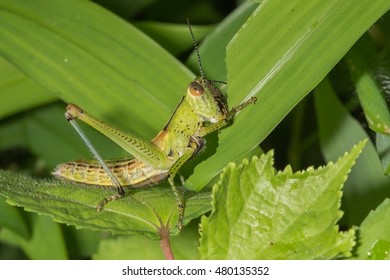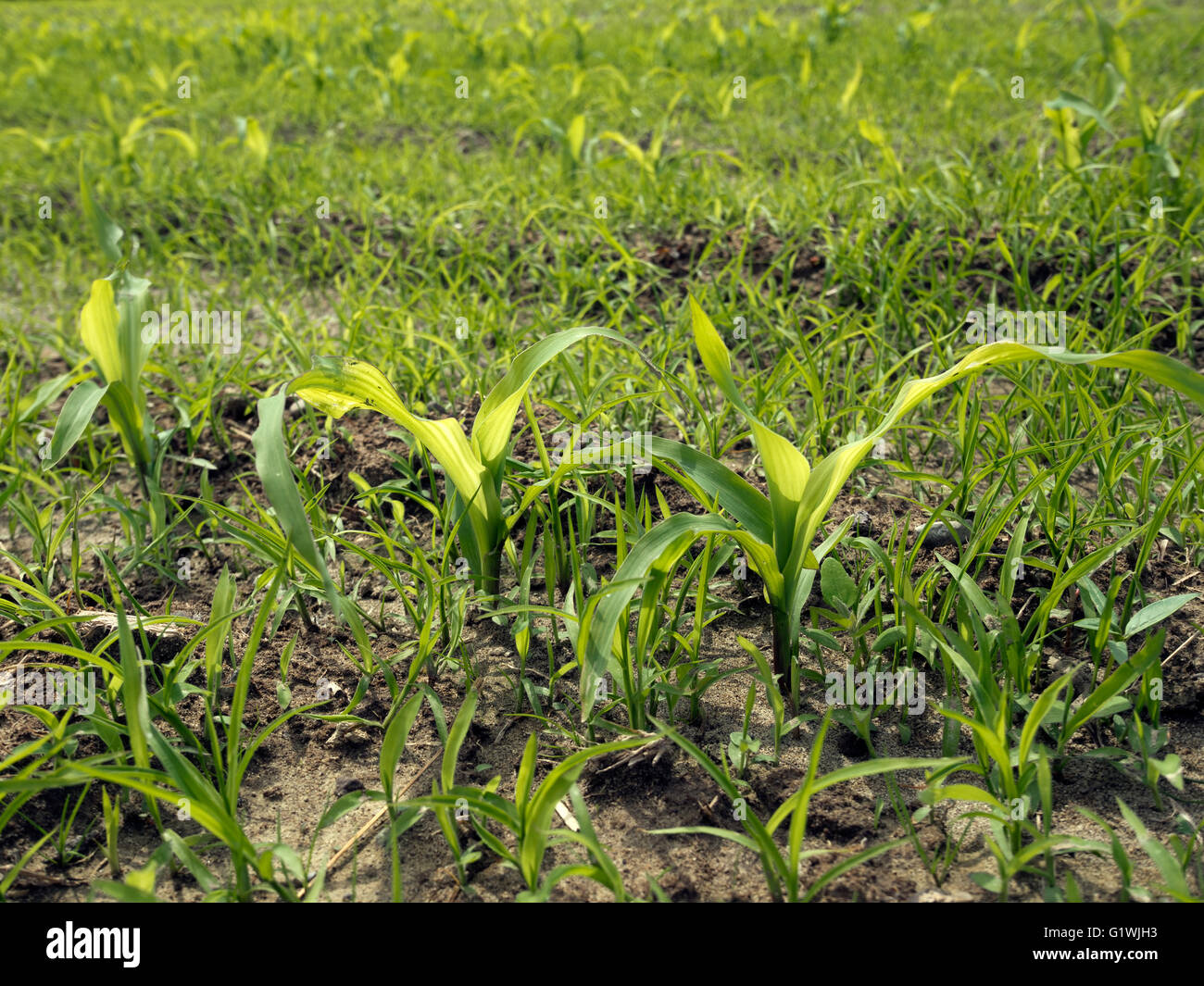TL;DR
Plants are sensitive to the soils they live in because they can't move. Soils that are saturated with heavy metals, such as serpentine soils, are hazardous to all plants except for those that have adopted unique coping strategies to counteract the toxic effects they have on plants. Increasing the production of phenolic compounds, a class of chemicals that plants produce to protect themselves from stress, is a strategy some plants use to detoxify themselves. Because soils that are saturated with heavy metals are more stressful for plants, plants in these soils tend to produce more phenolic compounds than in more conventional soil types. However, plants produce phenolic compounds in the presence of several types of stress, so there may be underlying connections between how different types of stress affect plants that are worth investigating.
What are metals in soil and how do they affect plants?
Plants, as much as they might wish to if they could think or make wishes, don't have a way to get around and are essentially stuck wherever their seeds decide to land. Because plants can't leave the soils they germinate in, they tend to be especially sensitive to the properties of their soils.
It may be hard to believe, but soil typically has a lot of metals in it. These metals can influence how plants grow and produce chemicals. Granted, these metals aren't noticeable to most people being as small as they are, but there are definitely significant amounts of metals such as calcium, potassium, lead, and others in soils. While plants use some metals in their chemical processes, such as potassium and calcium, several, such as lead and gold, are much less useful to plants. When soils become saturated with these soils, plants undergo metal stress (Veatch-Blom, 2017). Metal stress occurs when plants intake too many metals in the soil which interfere with their chemical pathways and can cause plants to grow poorly and look awful, like this!
Certain soils have higher concentrations of heavy metals than others, and plants have devised some interesting strategies to grow in metal-saturated environments! For instance, many plants undergo a process called chelation, which can neutralize the negative effects of these metals by converting them to a form that isn't harmful to plants. Heavy metals can also react with plants to create highly-reactive oxygen species, which can also harm plants. Plants adapted to metal-saturated soils can counteract this by creating compounds that can deactivate these reactive oxygens.
These compounds plants create to deal with heavy metal stress are typically phenolic compounds, which are compounds plants synthesize to mitigate stress, provide extra structure, and interact with other plants. Phenolic compounds are also associated with a unique growing strategy that plants share: if nutrients are poor, plants will grow slower and produce more phenolic compounds than if they were exposed to more nutrients: this is called the Resource Availability Hypothesis (Coley, 1985). Because phenolic compounds are such a good indicator for many different characteristics such as plant stress and growth strategy, scientists are still trying to figure out how exactly these compounds interact with soil. The presence of metals in the soil evokes different responses within plants and their production of phenolic compounds, and that's what we'll be examining in this blog post!
How do metals help plants (and stimulate phenolic compound production)?
Trace amounts of many metals, especially essential metals for plants such as potassium, magnesium, and calcium, are highly beneficial to plants; these metals are used in several of their chemical pathways. For instance, one molecule of chlorophyll, the pigment that helps provide plants with sugars, contains a magnesium element! Other chemicals, such as phenolic compounds, also contain small amounts of these metals. With this in mind, it's fairly intuitive that if soils have more essential metals for plants to acquire, then compounds that contain these would be produced more than in soils that lacked these metals. If phenolics are compounds that require these metals, wouldn't we expect their concentrations to increase in plant leaves?
Well, that's pretty much the case! Researchers find that plants in potassium-rich soils produce more phenolic compounds than those in soils that are less potassium-saturated; this suggests that potassium abundance in soils is a pretty good predictor for total polyphenols (a group of large phenolic compounds) in the herb A. annua (Luo et al. 2019). This conclusion is important because A. annua produces a chemical called arteminisin, which, when paired with phenolic compounds produced by this plant, is used in a Chinese folk medicine used to treat malaria and cancer, which is currently being explored for applications in conventional medicine (Luo et al. 2019). This is just one example, but it demonstrates how plants can benefit from essential metals in their soils to produce phenolic compounds that can be useful to both plants themselves and the humans who often depend on them!
How do metals harm plants?
While plants can utilize essential metals to synthesize the chemicals they need, including phenolic compounds, other metals in excess can overwhelm plants through metal stress. Serpentine soils, a group of soils that have an unusually high heavy metal content and unbalanced amounts of essential metals, are known to be inhospitable to all but the most well-adapted of plants (Veatch-Blom, 2017).
Scientists studied how plant properties of A. borealis (yarrow, a flowering herb) responded to serpentine soils in part to better understand how serpentine soils can affect plants. They tested this by growing two strains of yarrow, one adapted to serpentine soils and one that was not, in both nonserpentine and serpentine soils. Their results are explained by the figure below!
How do plants (and phenolic compounds) deal with metal stress?
We touched on this earlier in this blog post, but plants have strategies for just about everything, and that includes dealing with heavy metals and the stress they cause! Chelation and oxygen-scavenging, which we discussed earlier too, help mitigate the harm heavy metals can do by manipulating their chemical properties, but plants have simpler ways of protecting themselves from heavy metals. One such method is just preventing them from entering plant certain cells altogether! Plants do this by compartmentalizing their cells to where dangerous heavy metals are stored away from vulnerable organelles such as chloroplasts (Di Toppi et al. 1999). When plants are stressed, whether it be from drought, heavy metals, or other abiotic factors, plants can synthesize stress proteins, which also help stabilize the plant's chemical integrity, similarly to the other discussed strategies we discussed (Di Toppi et al. 1999). But there's an especially relevant group of chemicals that are also used to help mitigate metal stress!
Phenolic compounds are actually a fundamental way plants respond to heavy metal stress! These phenolics are essentially used by plants to give themselves a detox, as they can be used to chelate metals and scavenge free radicals which would otherwise interfere with their chemical pathways. Because of this relationship between stress and phenolic compounds (which we've touched on in other blog posts), environments rich in heavy metals typically stimulate phenolic production. In support of is, scientists have found that plants have higher concentrations of phenolic compounds in the presence of nickel (Veatch-Blom, 2017), cadmium (Di Toppi et al. 1999), manganese, and zinc (Gasecka et al. 2017).
What about the big picture?
Because plants don't get to choose the properties of the soils they live in, they need to prepare themselves for what they can. While most plants are well-adapted to more conventional soil, others must spend energy into producing traits that can best prepare them for whatever challenges their soils might bring them. The Resource Availability Hypothesis states that because of the need to produce extra energy for mechanisms to survive stressful habitats, plants must grow slower to compensate for this energy sink. Phenolic compounds fit into this process because, in spite of their many benefits they provide plants, they're expensive! They cost a lot of resources to produce, and investing in them is a trade-off that plants must make when they could use these same resources to grow larger quicker.
But it may not be that simple! We don't fully understand how phenolic compounds are made, and it could be that conventionally stressful environments, especially those with access to unique elements such as serpentine soils, might be full of potential building blocks for these compounds. The increased production of phenolic compounds is a conventional plant reaction to stress so there could be underlying similarities we could uncover between heavy metal stress, and, say, heat or drought stress. Investigating these and the phenolic compounds and other plant defense strategies these simulate could reveal some deep insights between how defenses are related to the stresses that produce them.
References:
Coley P. D.
et al. Resource availability and plant antiherbivore defense. – Science 230:
895–899, 1985.
Gąsecka, M.,
Mleczek, M., Jutrzenka, A., Goliński, P., & Stuper-Szablewska, K. Phenolic compounds in leaves of Salix species and hybrids growing under
different soil conditions. Chemistry & Ecology, 33(3), 196–212, 2017
Michalak, A. Phenolic Compounds and Their Antioxidant Activity in Plants Growing
under Heavy Metal Stress. Polish Journal of Environmental Studies, 15(4),
523–530, 2006.
Shi-Qiong
Luo, Cheng Zhao, Zhan-Nan Yang, Sheng-Juan Di, Zhu Zheng, & Juan Hu. CORRELATION ANALYSIS OF NUTRIENTS, ENZYMES, AND MICROBIAL BIOMASS IN
SOILS WITH PHENOLICS OF Artemisia annua L. Pakistan Journal of Agricultural
Sciences, 56(1), 171–178, 2019.
SGHERRI C.,
COSI E., NAVARI-IZZO F. Phenols and antioxidative status of Raphanus sativus
grown in copper excess. Physiol. Plant. 118, 21, 2003.
SIEDLECKA A.,
TUKENDORF A., SKÓRZAŃSKAPOLIT E., MAKSYMIEC W., WÓJCIK M., BASZYŃSKI, T., KRUPA
Z. Angiosperms. [in] Metals in the environment. Analysis of biodiveristy.
Prasad M.NV (red) Marcel Dekker, Inc. New York, Hyderbad India, pp 171-217, 2001.
SILVA, Maria
Lígia de Souza; VITTI, Godofredo Cesar and TREVIZAM, Anderson Ricardo. Heavy
metal toxicity in rice and soybean plants cultivated in contaminated soil. Rev.
Ceres [online]. vol.61, n.2, 2014
Sanita di
Toppi L, Gabbrielli R. Response to cadmium in higher plants. Environ.
Exp. Bot. 41:105–30, 1999.
Veatch-Blohm,
M. E., Roche, B. M., & Dahl, E. E. Serpentine populations of
Arabidopsis lyrata ssp. lyrata show evidence for local adaptation in response
to nickel exposure at germination and during juvenile growth. Environmental
& Experimental Botany, 138, 1–9, 2017.










